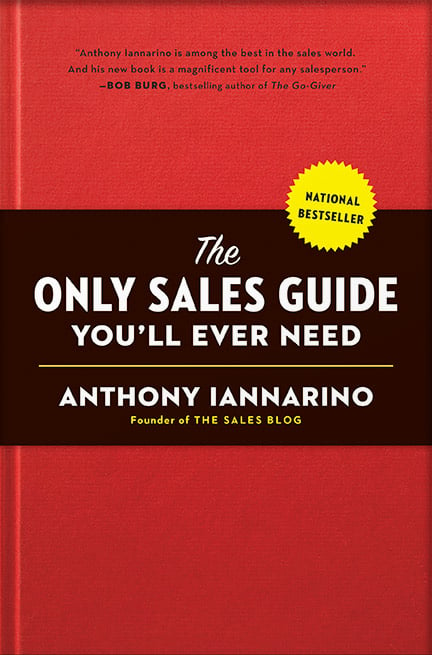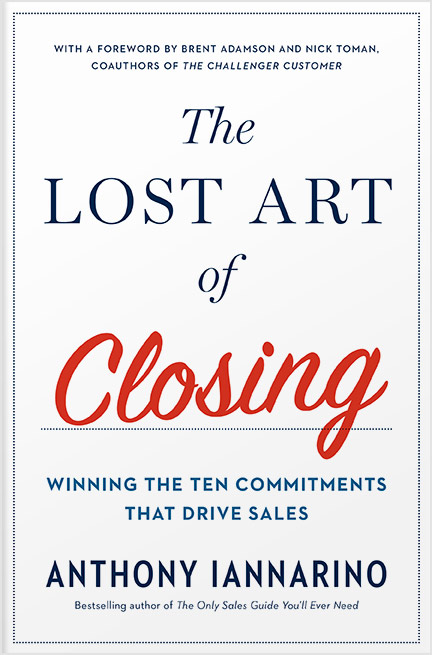The Gist:
- Selling is a series of problems that you have to solve.
- Some of these problems prevent you from creating new opportunities while others are obstacles to winning them.
- Success comes from using your resourcefulness and creativity to solve these problems.
One useful lens in B2B sales is seeing the cycle of creating and winning deals as a series of problems you need to solve, a puzzle of sorts. This post describes some of those problems and gives you some clues on how to solve them.


- Getting a Meeting: The first problem you have to solve in B2B sales is how to get a meeting with your prospective client. Solving this problem requires that you offer the client a value proposition for the meeting that they can agree to, offering resources and information that they find valuable. To win this game, you must find and provide something that your contact will agree is a valuable trade for their time.
- Compelling Change: The legacy approaches to professional B2B sales started with the assumption that your client is already unhappy with their results and motivated to change, something that is rarely true in the 21st century. To create a new opportunity, you have to solve the problem that is compelling the client to change. You need to work to find a theory as to why your prospective client might need to change, a process you might start by examining what caused your existing clients to strike out on a new path.
- Differentiating Yourself: It’s incredibly important that you create a preference to work with—and buy from—you. Many salespeople will make similar claims about solving their clients’ problems, so when it comes to the sales conversation you have to differentiate yourself in some meaningful way. Your impulse may be to seek that meaning in external things, but the only answer to this riddle comes from inside. The value of the conversation you have with your contacts is the best way to differentiate yourself from your competitors.

No more pushy sales tactics. The Lost Art of Closing shows you how to proactively lead your customer and close your sales.
- Creating Value in Discovery: If you ask contacts some version of “what’s keeping you up at night,” you’re not going to impress them with your tremendously powerful questioning technique. To solve the puzzle of creating value in discovery, you should instead help your client discover something about their business and the true nature of their challenge—even when their main challenge is themselves. Focus on asking questions and sharing insights that cause the client to experience a “light bulb” moment, as evidenced by the response, “that’s a great question.”
- Identifying the Ground Truth: There is often a large gap between the presenting problem the client shares with you and its root cause. Addressing the presenting problem doesn’t often help the client produce the better results they need. You are solving for the ground truth: what is really preventing the client from improving their position. Success here is found in identifying what is behind the presenting problem, something that almost always goes back to poor assumptions or past decisions that the client doesn’t want to address.
- Gaining Access to the Necessary Stakeholders: If we were scoring these outcomes by level of difficulty, this is the equivalent of the Triple Lindy (insert clip from Rodney Dangerfield’s Back to School). You first need to know who you need to include, a group your contacts will struggle to identify. Then you need to convince your contacts that is in their best interest to add people to a process that is already difficult. You challenge here calls for diplomacy, resolving concerns, and helping your contacts maintain control of a process that becomes more challenging as more people have a chance to weigh in on any decision to change.

Win customers away from your competition. Check out Eat Their Lunch
- Gaining Consensus on the Solution: Because decision-makers want consensus, you have to figure out how to get the necessary support for your solution from at least two groups: 1) the stakeholders who are going to decide whether to buy from you, and 2) the ones who are going to be impacted by a decision to adopt your recommendations. How do you create a solution that works for end users, ancillary stakeholders, management, and executive leadership? What adjustments must you make, and what will you need from some or all of the stakeholders you are working with towards an agreement?
- Obtaining the Right Investment: The results you create are going to be limited by what your clients can invest in the better results they need. Every prospective client would buy your top-of-the-market solution if money really were no object. Money, however, is always a constraint. You need to figure out how to get the necessary investment to produce the results your client needs. Avoid giving pricing concessions that prevent you from being able to profitably serve your clients by improving their position.
- Executing the Solution: Once you sell your client the outcome you create for them, you have to make sure they do what is necessary to capture the value of your solution. The challenge is twofold. First, you have to position your team to succeed for the client. Then you must make sure your new client picks up their end of the stick, making the changes that will result in better outcomes. Without execution, all is for naught.
There isn’t one way to solve any of the problems listed here. They all require that you decide what to do, see what works, and modify your approach, increasing and improving your ability to solve each of these problems individually and, eventually, collectively. Treating this exercise like a game can help activate your resourcefulness and your creativity, the limitless human capacity to figure things out.
One last thing: this isn’t a high school geometry test, where copying Karen’s answers may well get you suspended. In this case, you can cheat like the Devil, stealing answers from others who have already solved these problems. There is no reason to take longer to produce results by figuring everything out through trial and error.
Do Good Work:
- What challenges prevent you from creating new opportunities?
- Which of the problems do you struggle to solve when it comes to capturing opportunities?
- What problems have already been solved and documented, and how can you learn from others’ solutions to accelerate your results?








.jpg?width=768&height=994&name=salescall-planner-ebook-v3-1-cover%20(1).jpg)


